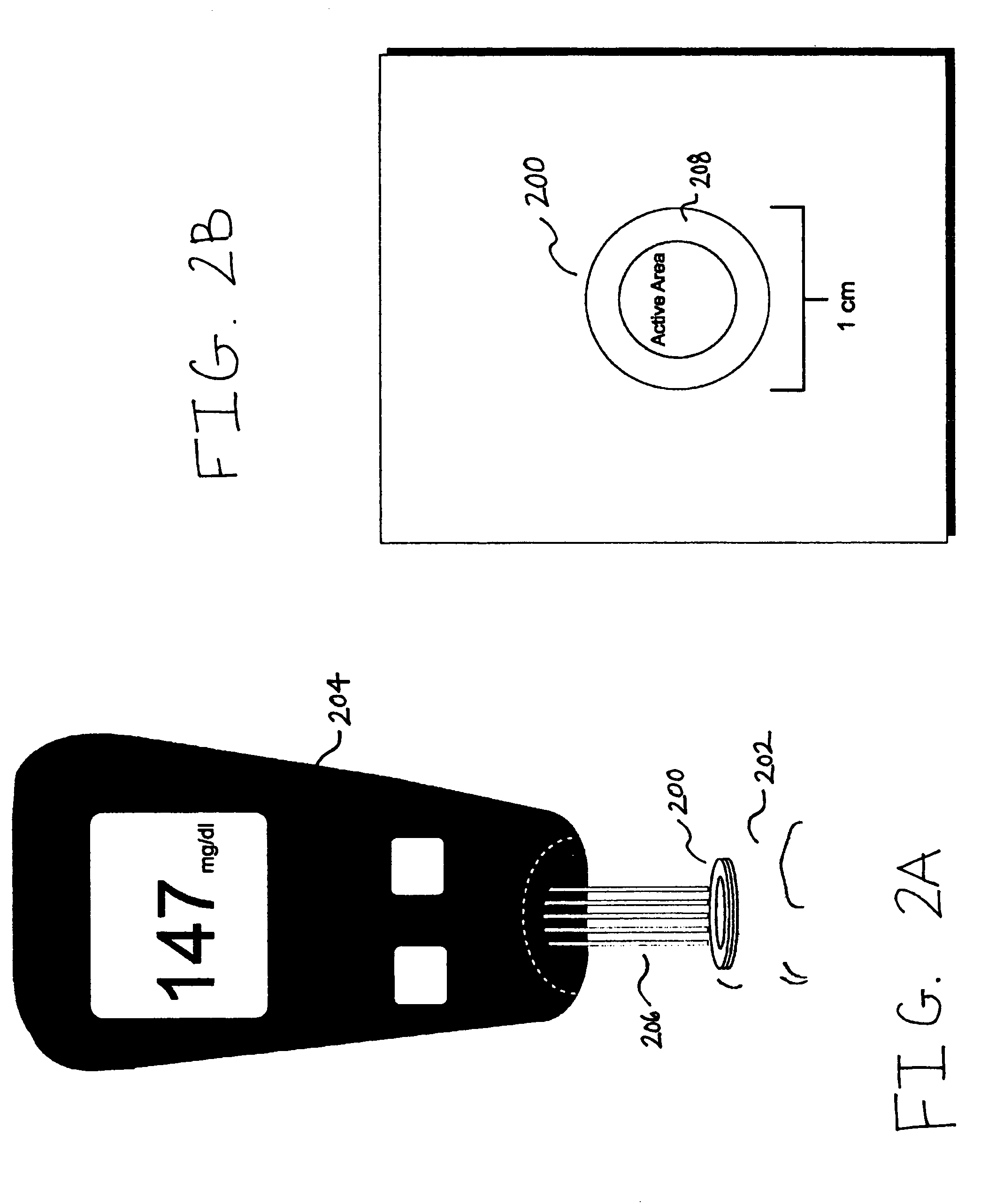Devices, methods, and kits for non-invasive glucose measurement
a glucose measurement and non-invasive technology, applied in the field of non-invasive glucose measurement, can solve the problems of inability of the body to properly use insulin, toxic levels of glucose in the blood, and diabetics using insulin to help regulate blood sugar levels are at an increased risk of medically-dangerous episodes of low blood sugar, etc., to achieve a suitable amount of sweat and a local sweat rate that is pharmacologically enhanced
- Summary
- Abstract
- Description
- Claims
- Application Information
AI Technical Summary
Benefits of technology
Problems solved by technology
Method used
Image
Examples
example 1
Investigation of the Effects of a Sweat-Permeable Membrane
[0098]A standard pilocarpine iontophoresis was performed simultaneously on the clean dry skin of both arms of a 40 year old male type I diabetic. The skin was wiped after stimulation and a MedOptix Macrovial surface was applied within 1 min following the iontophoresis (the MedOptix Macrovial allows serial samples of sweat to be collected from the same site on the skin. It is made from a plate having a hole therethrough for contact with the skin surface. On the non-skin contacting side of the plate, a capillary tube connects the hole to a collection chamber or vial). A Vaseline-paraffin barrier material (acting as a sweat-permeable membrane) was applied to the site on the right arm before the MedOptix Macrovial was applied. Samples were collected every 10 minutes from the appearance of the first drop of sweat on the end of the MedOptix Macrovial. The subject came in with an initial blood glucose level of about 220 mg / dl, which...
example 2
Correlation of Sweat Glucose to Blood Glucose
[0101]Both forearms of the subjects used were wiped with a standard 70% isopropyl alcohol swab. Cotton pads soaked in a buffered saline and 1% pilocarpine solution were applied respectively to the negative and positive electrodes of a standard iontophoresis device. A charge (dose) of 10 mA-min at a current of 1 mA was applied to the electrodes as they were held tightly against the skin of the subjects with elastic straps. The skin was wiped after 10 min of iontophoresis and a MedOptix Macrovial was applied to the site of the positive electrode within 1 min following the iontophoresis. Sample vials were replaced every 10 or 15 min until sweat flow became less than about 10 μl over the collection interval.
[0102]Blood glucose levels were determined from capillary finger pricks every 10 minutes using a commercial personal blood glucose meter (ACCU-CHECK ADVANTAGE®, Roche). In some experiments macro-vials were placed simultaneously on the righ...
PUM
| Property | Measurement | Unit |
|---|---|---|
| diameter | aaaaa | aaaaa |
| diameters | aaaaa | aaaaa |
| areas | aaaaa | aaaaa |
Abstract
Description
Claims
Application Information
 Login to View More
Login to View More - R&D
- Intellectual Property
- Life Sciences
- Materials
- Tech Scout
- Unparalleled Data Quality
- Higher Quality Content
- 60% Fewer Hallucinations
Browse by: Latest US Patents, China's latest patents, Technical Efficacy Thesaurus, Application Domain, Technology Topic, Popular Technical Reports.
© 2025 PatSnap. All rights reserved.Legal|Privacy policy|Modern Slavery Act Transparency Statement|Sitemap|About US| Contact US: help@patsnap.com



